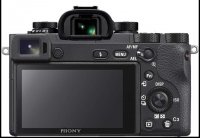Can someone explain to me why a mirrorless camera can't just have an EF mount? Why can't it be a camera that's like the current cameras, but mirrorless?
With all the great EF lenses, what's the advantage of a new mount?
Three reasons:
One: flange distance, that is, the distance from the back end of the lens to the sensor. For the EF lens that is 46mm. That allows the lens to clear the mirror on a DSLR. Importantly, that's the distance that the throw of light from the lens focuses -- on the sensor, where it should. Change that distance and the lens no longer throws the light to focus on the sensor.
So on a mirror-less camera, you'd need to support a flange distance of 46mm to use the EF lens. But that MILC camera doesn't NEED 46mm, because there's no mirror to accommodate. One of the appeals of a MILC is a smaller, lighter camera. Building it to accommodate the EF lens is a problem.
Two: that long flange distance creates another problem, that is, the design of the lens. Particularly for a wide-angle lens, to throw the light onto the sensor becomes difficult, and the design required to do that is complex -- therefore heavy and expensive. Notice how light an EF-M lens is? With the short flange distance (I think 15mm for that series), it turns out that the lens design becomes simpler, therefore lighter and less expensive (yes, you could make it some heavier with weather sealing, construction, etc., and since you're Canon you could always, always make it more expensive).
Three: the width of the mount, that is, the hole in the body where you attach the lens. On an MILC you can make that wider; that means (potentially, all other things being equal) you can have lenses with larger apertures. The new Nikon 50mm f/0.95 S series lens is an example.
So in a new MILC it's really, really tempting to design a new lens series. You can, because of the fact that you have room, design an adapter for the EF lens, much like the EFM adapter for the M series cameras. All that does is connect the lens electronically and reset the flange distance to 46mm. If Canon has a new R series camera, their choices are 1) forsake the EF series (not happening), 2) find a way to mount the EF lenses natively (that's the issue here) and 3) use an adapter (like the M series).

